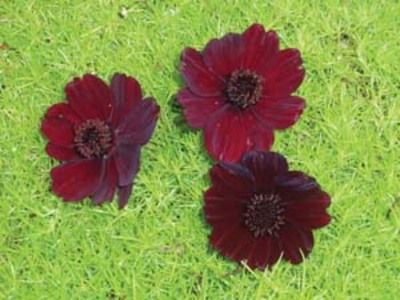
With students going back to school, my thoughts turn to young people and how to pique their interest in the plant world. Many schools have life lab gardens, and families growing vegetables and fruit trees have a head start.
What better way to learn how plants grow? It’s a big horticultural world out there, filled with plants to taste, smell and touch. Kindle a child’s curiosity early, and you create a gardener for life.
Pet-able plants are a sure hit with kids. Usually, we tell them, “don’t touch,” so to actually have someone encourage this is a rare treat.
If your own garden doesn’t have plants that look and feel so soft that you can’t resist petting them, consider adding one or more of the following:
- lamb’s ears
- Scotch moss
- fiber-optic grass
- lotus Golden Flames
- coleonema Sunset Gold
- artemisia Powis Castle
- red fountain grass
-
Fragrant flowers and foliage also teach us to stop and savor our surroundings. I always love it when I can introduce a youngster to different plant smells.
They never forget the experience and will go back again and again to a fragrance they like. Some common plants I enjoy at this time of year are:
- chocolate cosmos
- sweet alyssum
- heliotrope
- chocolate mint
- nemesia
Fruit tree advice
August is the best time for summer pruning. If you haven’t already done so, thin out shoots and crossing branches.
This allows more air and light into the tree, reduces disease and promotes earlier ripening of the fruit.
Remove most water sprouts. These are the soft, fast-growing shoots usually growing straight up. Cut them back to a main branch. If you need to fill in a spot in the tree and there’s a water sprout growing there, cut that one back to about 2 inches and it will promote a fruiting spur.
Pruning fruit trees this month controls the size of the tree and can also prevent rampant sprout growth next spring. That’s because pruning removes many of the little food factories (leaves) that supply energy to the plant and store it, to be used for growth in the spring.
Prune to maintain a vase-like shape. By promoting upright limbs high in the tree and pruning hardest in upper and outer portions, fruiting wood is maintained throughout the tree.
Also eliminate limbs growing inward. Remember never to prune more than a quarter of the total mass of your tree at any one time and no more than a third per year. It is better to space out corrective pruning over four years if your tree has gone too long since the most recent pruning.
One last thing — fertilize your trees one more time. Most established fruit trees need their first application when the tree begins to emerge from dormancy in the spring, another after fruit set and the third immediately after harvest. For young trees in the first, second or third growing season, apply fertilizer at half the normal rate.
Feed your trees, and they’ll feed you.
Jan Nelson, a California certified nursery professional at Plant Works in Ben Lomond, will answer questions about gardening in the Santa Cruz Mountains. E-mail her at ja******@*ol.com.












